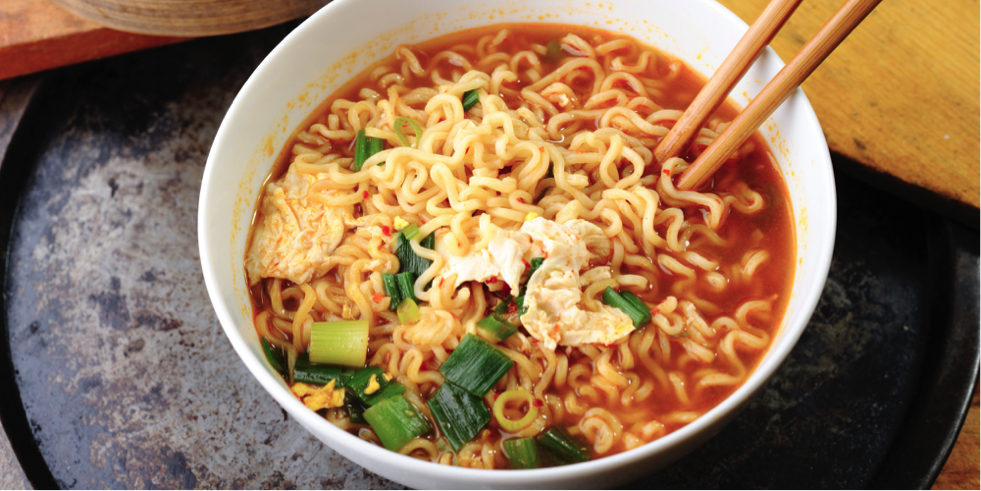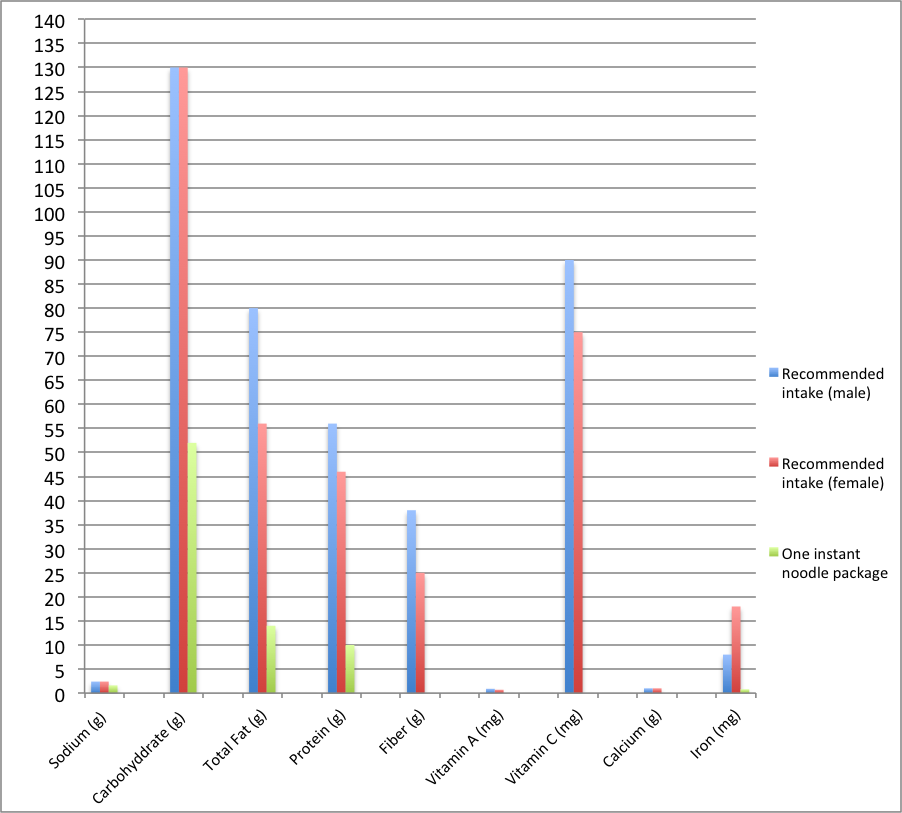The Savory Science of Instant Noodles
Posted on Categories Discover Magazine

Photo credit: Huffington Post
Guest post by Panisa Sundravorakul
Instant noodles are delicious, cheap, and easy prepare. This combination of traits make instant noodles a seemingly perfect solution for college students’ hectic schedules and depleted bank accounts. Let us take a moment to appreciate what made instant noodles possible – let us savor the science behind this culinary delicacy.
Instant noodles are truly a technological marvel – they can last for up to 12 months on the shelf, and a tiny little packet of seasoning make the noodles taste so good. You can thank science for making this all possible. The shelf life of instant noodles ranges from 4 to 12 months, depending on environmental factors. Finding ingredients that are stable for this long, especially fats and oils that are prone to oxidation, is a culinary challenge.
Thanks to science, antioxidants like tertiary-butyl hydroquinone (TBHQ) can extend the shelf life of instant noodle by preventing the oxidation of fats and oils; this happens by donating electrons to neutralize free radicals, which stabilize the radical’s instability [1]. The texture of instant noodle is preserved by propylene glycol. This substance is found in the noodles mixture, and helps them retain moisture and prevent them from drying [2].
To enhance to flavor of instant noodles, monosodium L-glutamate (MSG) is a common additive. This molecule adds a robust and savory flavor to food, which is commonly described as umami, the fifth sense after salt, sweet, sour, and bitter. Recent studies have found L-glutamate (Glu) receptors and transduction molecules in the gut mucosa as well as the oral cavity (REF). The gastric infusion of MSG activates several brain areas, such as the insular cortex that is linked to the regulation of homeostasis; the limbic system is linked to olfaction; and hypothalamus is linked to certain metabolic processes and hunger control. This suggests that Glu signaling via the gustatory and visceral pathway plays a crucial role in digestion, absorption, and metabolism. [3]

Figure 1. Nutritional content vs. daily recommended intake for various components of instant noodles. (Photo Credit: Panisa Sundravorakul)
While noodles might be tasty, convenient, and save your money and time, they do not contain sufficient nutrients that fulfill your body’s daily nutritional needs. Instant noodles are relatively high in sodium, carbohydrates and fat, and quite low in protein, fiber, vitamins, and minerals [4]. Figure 1 compares the daily nutrition intake as recommended by The National Institute of Health to the nutritional content in one package of instant noodles Figure 1 [5]. Instant noodles account for too much of sodium daily intake, and not enough for fiber, vitamin A and C, calcium, and iron daily intake.
There is no doubt that instant noodle is a fascinating food science innovation. Health-wise, instant noodles are certainly safe to eat, but if you are thinking about consuming them regularly, think again about how your health could benefit from eating more nutrient-rich foods.
References Cited:
- Toxicology Data Network. “T-Butylhydroquinone”. S. National Library of Medicine. 2013. Web. 21 January 2017.
- Agency for Toxic Substances and Disease Registry (ATSDR).”Toxicological profile for Propylene Glycol”. Department of Health and Human Services, Public Health Serv 1997. Web. 7 Jan 2017.
- Torii, K. “Brain activation by the umami taste substance monosodium L-glutamate via gustatory and visceral signaling pathways, and its physiological significance due to homeostasis after a meal”. Journal of Oral Biosciences. 54.3 (2012): 144-150. Web. 20 March 2017.
- Nissin Foods. “Top Ramen- Nutrition Facts and Ingredients”. Nissin Foods. Web. 21 January 2017. National Institute of Health. “Nutrient Recommendations: Dietary Reference Intakes (DRI)”. U.S. Department of Health & Human Services. 2011. Web. 21 January 2017.